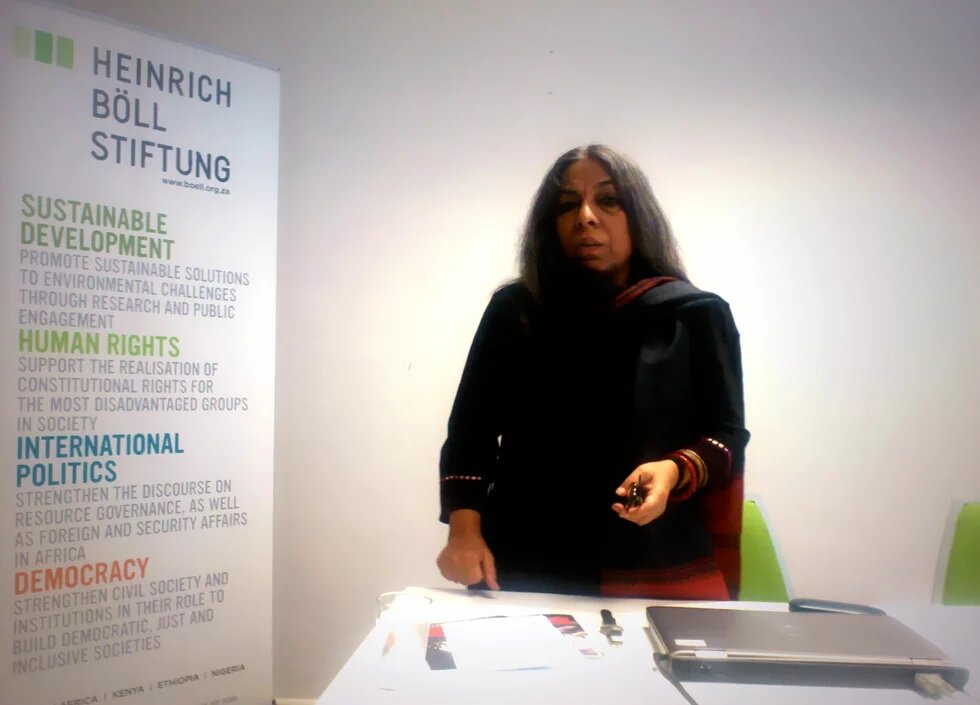
In early 2013, the cases of two young women, brutally gang-raped and murdered in different parts of the world received uncharacteristic national and international attention. One was Jyoti Singh, a 23-year-old from India; and the other was 17-year-old Anene Booysen in South Africa.
Both cases resulted in public outcry, though much more so and with more notable political repercussions in India. Considering that levels of violence against women are high in both countries, but either widely ignored or regrettably taken as normalcy in mainstream politics, what were the dynamics and specific factors and circumstances that propelled them into national and international prominence and can unpacking this influence the development of enhanced strategies to tackling endemic violence against women?
“Sexualised Violence in the National Debate: Cross-border observations from India and South Africa” is a joint project between the South Africa and the India offices of the Heinrich Böll Foundation. The project, which commenced in 2013, produced two comparative studies – one on South Africa co-authored by Joy Watson and Vivienne Lalu and the other on India authored by Urvashi Butalia.
The studies analyse the political, media and community responses to the rape and murder’s of the two young girls in the context of perpetuating violence against women in both countries. The studies also assess to what extent the unprecedented attention to these two cases led to any tangible social transformation processes.
On the 3rd of July 2014 28 women’s rights activists, academics and the media attended a dialogue hosted by HBF South Africa. The dialogue provided an opportunity to have the authors of the studies in conversation with the audience to not only to share the analysis of their studies but also to stimulate further consideration on the context and (gaps in) responses to rape crimes and on how the effectiveness of women’s activism in the Gender Based Violence and Violence against Women sector could be improved.
What the comparative studies revealed is that although the cases were somewhat similar in nature, the social and political reactions to the rapes and murders of the young girls differed. In India the government’s response to the mass eruptions of social protest was to initially curtail it rather than to respond to what its citizens were calling for. In South Africa, while some marks of social protest were made across the country, it was politicians who took the centre stage. Almost as soon as news of Anene’s death hit the media, politicians descended onto the small town of Bredasdorp, using any opportunity as a forum for party politicking. Despite these initial problematic responses, some positive remedial measures did emerge. Although some concerns remain on the implementation of these measures what the responses to the rape and murders of these young girls proves is that the state can prioritize addressing violence against women particularly when media influence and/or just the right amount of public pressure is placed on it to do so.
There are however “no quick-fix solutions” say the authors of the South Africa study, “strategic thought needs to be invested in the prevention of sexual violence. Otherwise, both private and public spaces will continue to be sites of potential danger for women and girls”.
Media articles on this project:
http://www.timeslive.co.za/thetimes/2014/07/04/sa-loses-in-a-tale-of-two-rapes
http://www.heraldlive.co.za/ordinary-people-government-slammed-for-attitude-to-rapes/
http://www.dailymaverick.co.za/article/2014-07-10-analysis-what-can-south-africa-learn-from-indias-
response-to-sexual-violence/#.U72U1PmSwhQ
Download the studies
South Africa study - Rupturing the norms: The social and political response to the rape of Anene Booysen
India Study - 16 December: A Rape, a Murder and a Movement